Isotype is now the generally used name for the work in visual communication carried out by groups under the direction of Otto Neurath and, after his death in 1945, by Marie (Reidemeister) Neurath. The institutions that produced this work were the Gesellschafts- und Wirtschaftsmuseum in Wien [GeWiMu] (1925–34), the International Foundation for Visual Education [IFVE] (1934–40), and the Isotype Institute (1942–71). We have published three books on Isotype: From hieroglyphics to Isotype, The transformer: principles of making Isotype charts, and Isotype: design and contexts, 1925–1971. The question of where copyright in the Isotype work lies has been a persistent one. The notes here provide an answer to it.
1
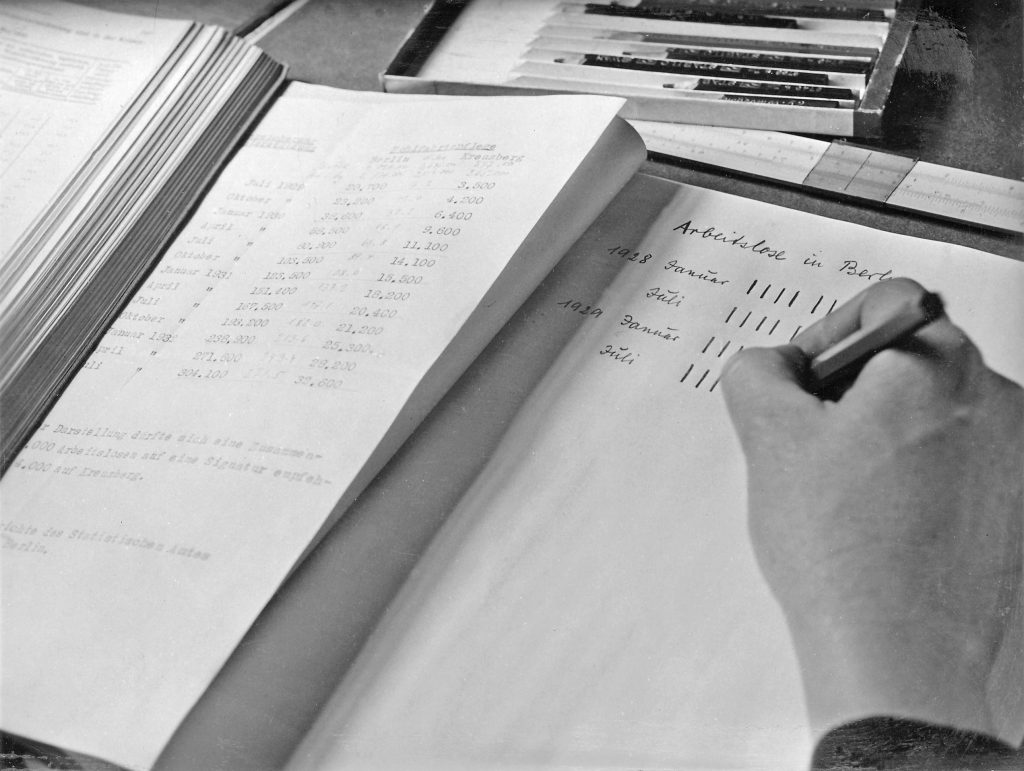
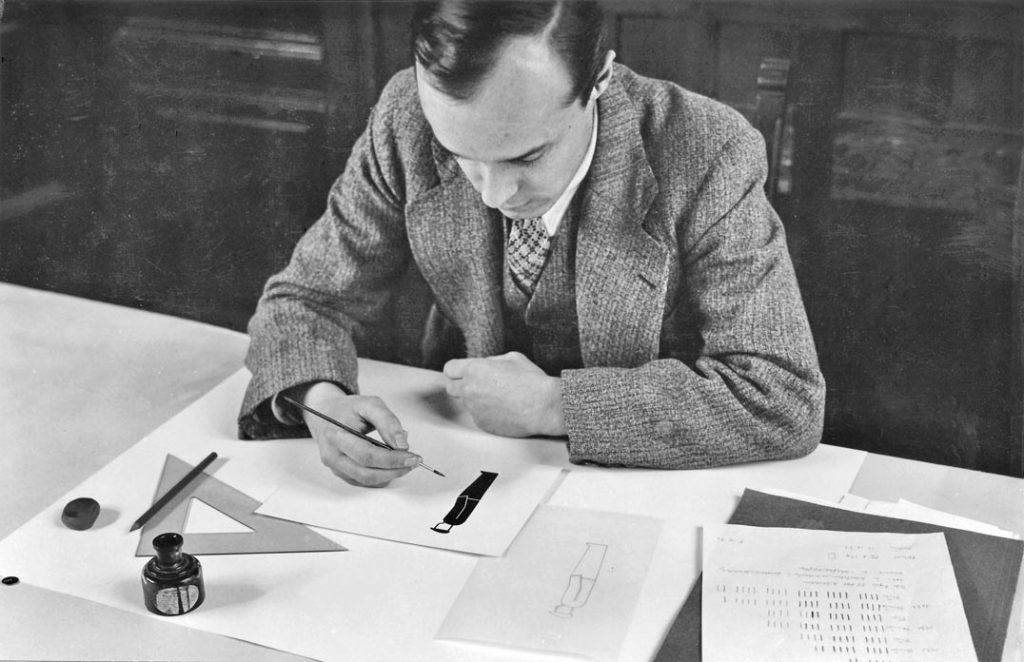

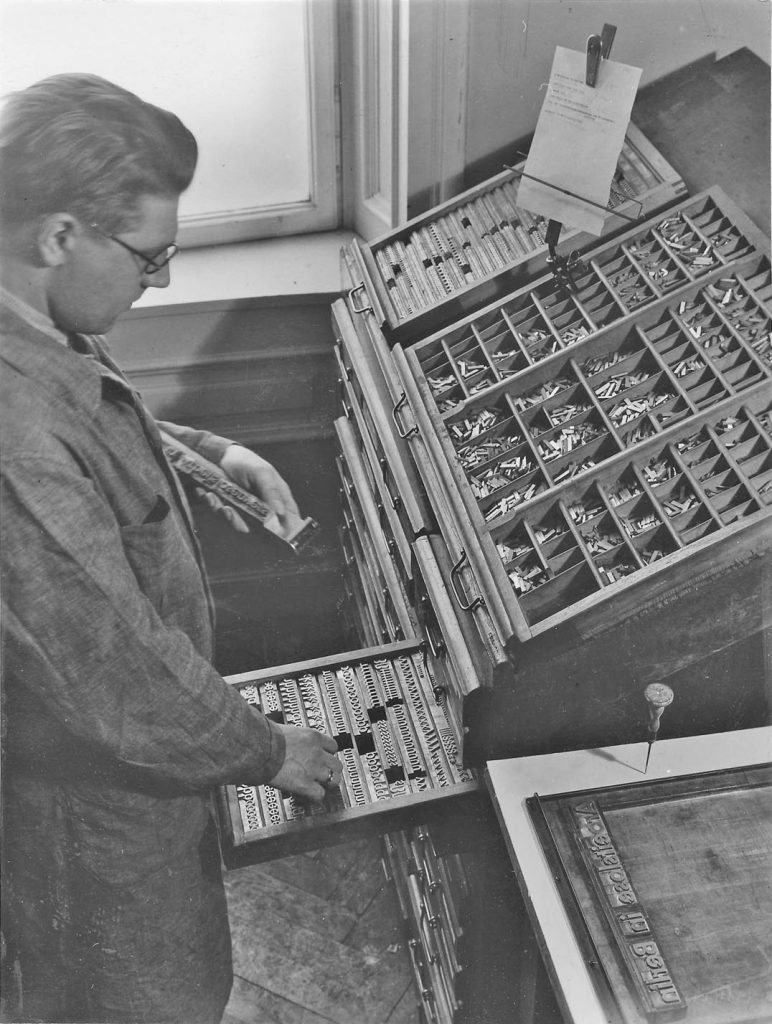
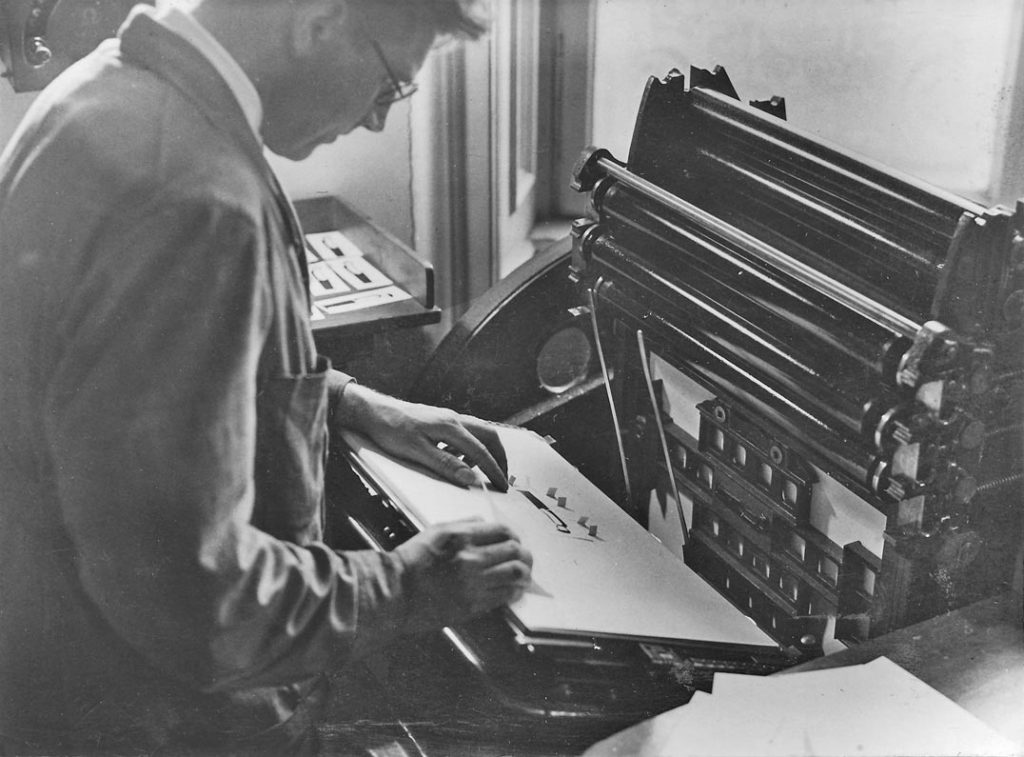
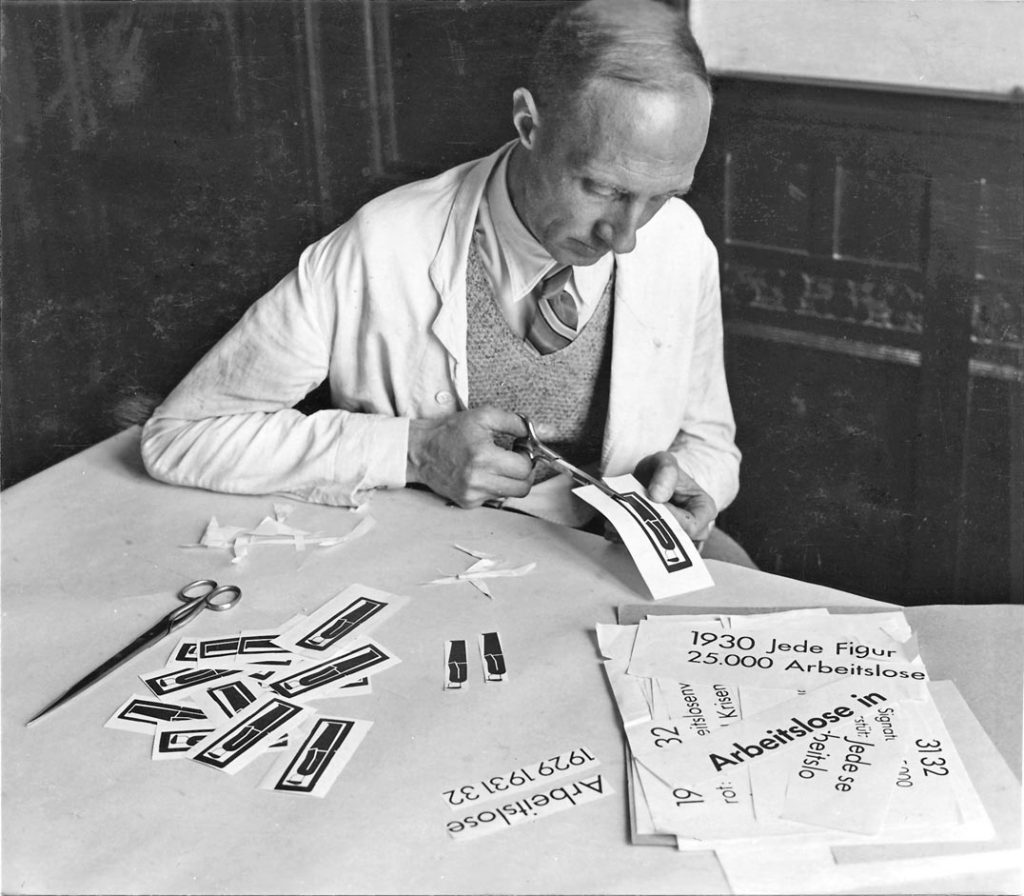
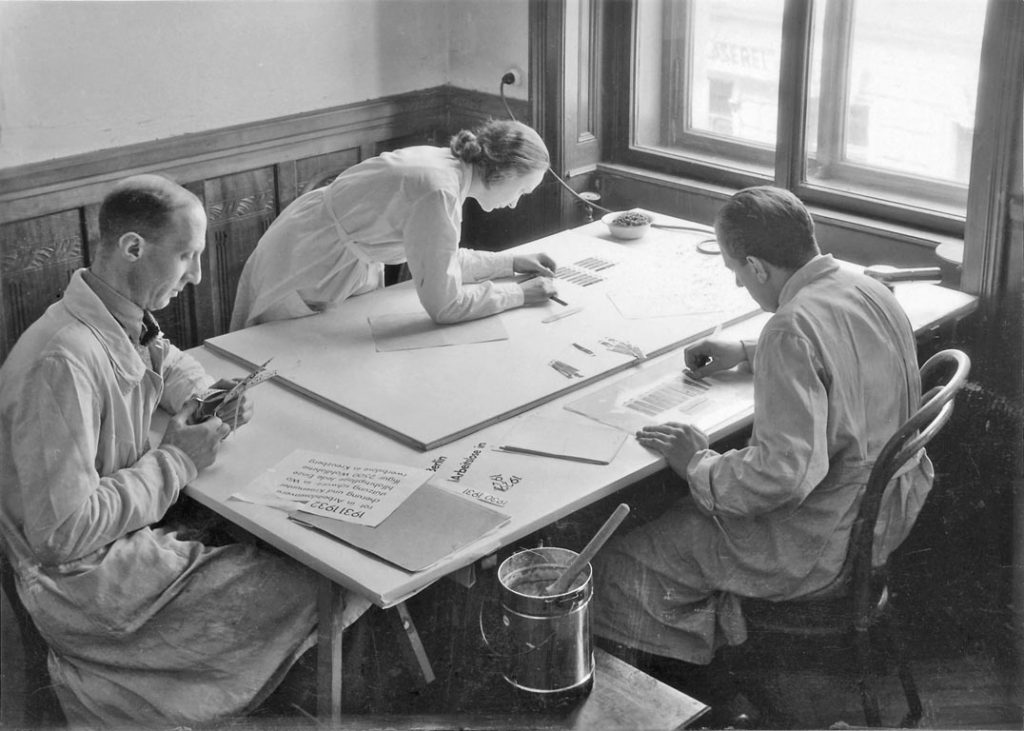
This was team-work. Each chart [Tafel ] carried the signature of the organization that made it. At the peak of the work in Vienna (around 1932) the set of photographs above was made, showing the various stages: transformation, drawing pictograms, cutting these pictograms in lino, setting type and printing the pictograms, cutting out, and then pasting the printed material to make the finished chart. The ‘transformer’ was the person who designed the charts; the graphic artists drew the pictorial elements – each worked in dialogue with the other, and with other members of the team.
Gerd Arntz remembered ‘Nu begonnen er jaren van een heel andere bezigheid dan tot nu toe … ik moest me inwerken in de problemen van de beeldstatistiek en samenwerken met andere mensen op vaste kantoortijden.’ [‘There now began years of an activity completely unlike anything I had done before … I had to work my way into the problems of pictorial statistics and work together with other people, in fixed office hours.’]1
2
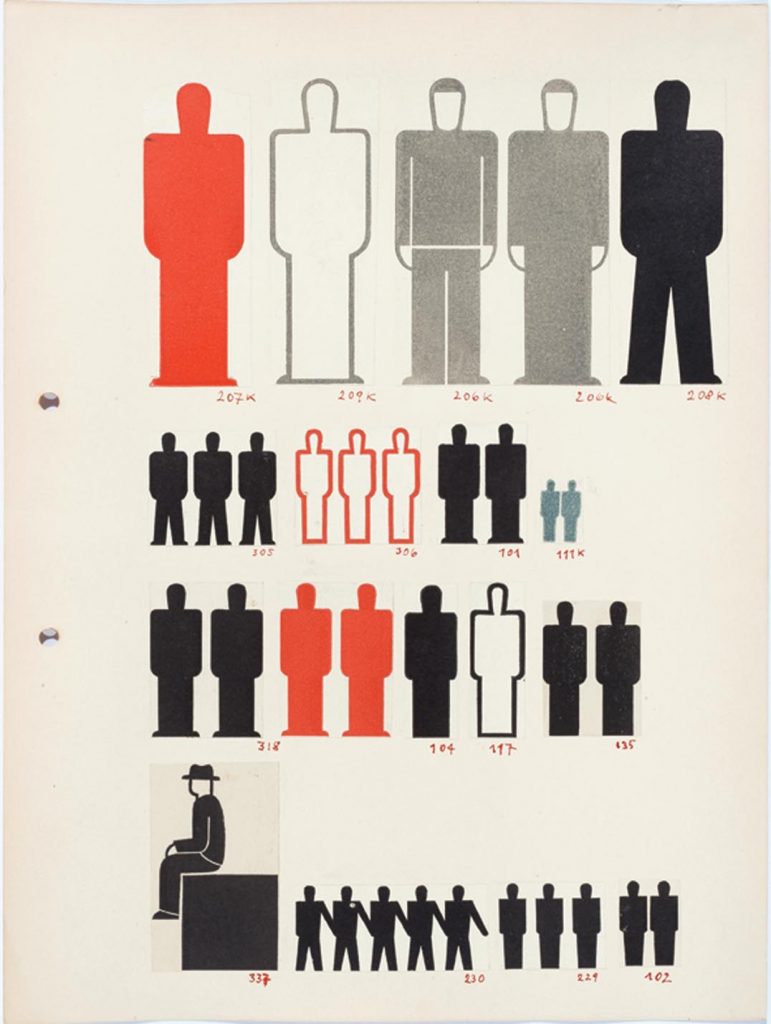
The pictograms and other visual elements of the GeWiMu, IFVE, and Isotype Institute, were part of the larger process of making charts. The ‘picture dictionary’ of the GeWiMu shows many pictograms, the majority of them apparently drawn by Gerd Arntz (or another artist working in his style), though not necessarily cut in lino by Arntz. These were drawn to order: the size of any of these images was determined not by the artist, but by the larger scheme decided by members of the group. So too the colour was determined not by the artist, but by the transformer. Details of the pictograms were decided in discussion with the transformer. This explains why so many pictograms were drawn that differ only slightly in size and in details of form and construction.
3
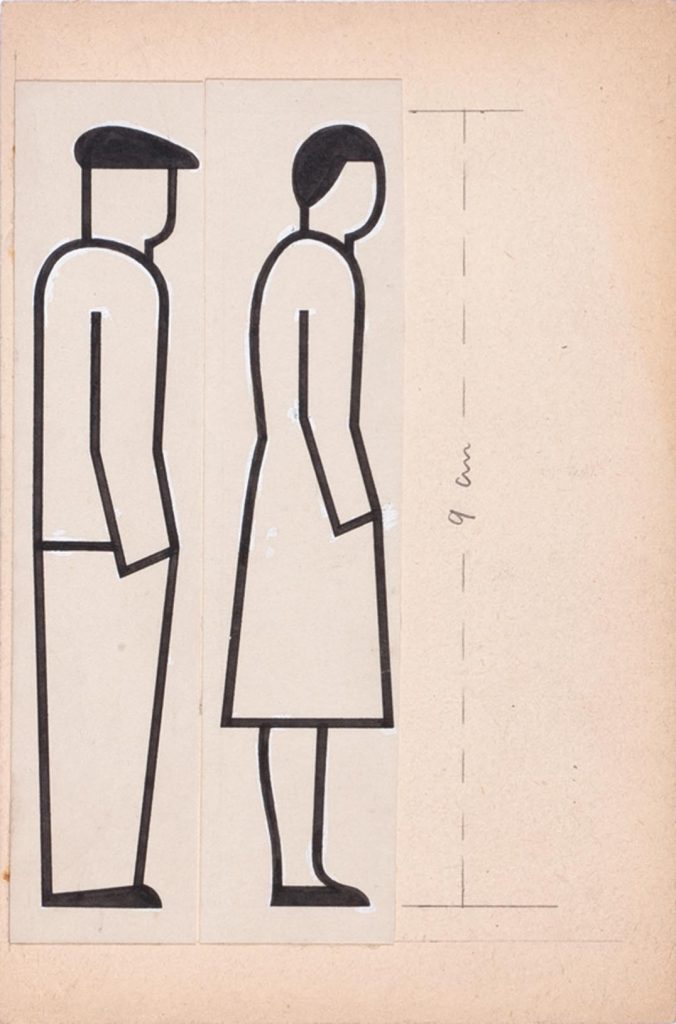
The same considerations that apply to the printed pictograms must apply also to the drawings for the pictograms. These drawings for pictograms are not free creations by an artist, but are part of the larger process of the team-work in making charts.
4
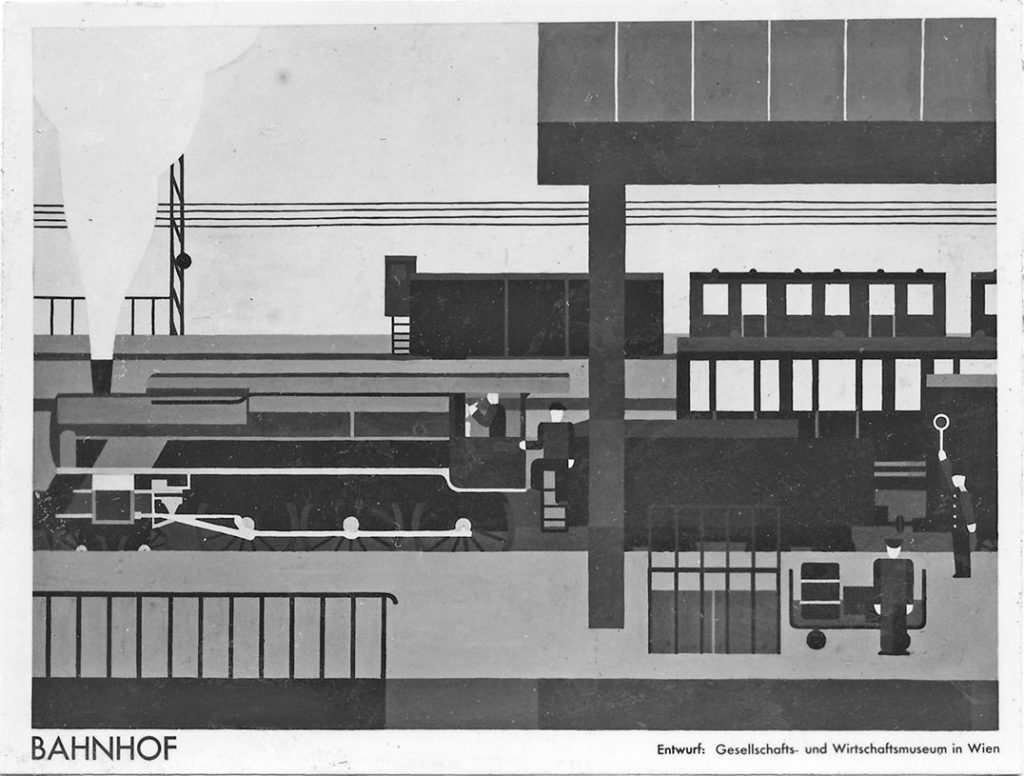
Gerd Arntz painted some large murals or wall-paintings for the Gemeinde Wien (Isotype design and contexts , pp. 232–3) and also made paintings for the GeWiMu (Isotype design and contexts , pp. 234). These were made as part of his paid employment at the GeWiMu. The painting shown above carries the credit ‘Entwurf: Gesellschafts- und Wirtschaftsmuseum in Wien’ [‘Design: Gesellschafts- und Wirtschaftsmuseum in Wien.’].
5
As the political situation in Austria deteriorated, Otto Neurath foresaw the need to move from Vienna. In 1933 the IFVE was established in the Netherlands as the body that could continue what had been started at the GeWiMu. In the brief civil war of February 1934 in Austria, the group moved to The Hague to continue their work. Then in May 1940, as German forces invaded the Netherlands, Otto Neurath and Marie (Reidemeister) Neurath left The Hague: they were in no position then to attend to transfers of legal ownership. In 1942 in Oxford, England, they established the Isotype Institute to continue their work. Otto Neurath died in 1945; the co-director of the Isotype Institute, Marie Neurath, died in 1986. In a signed statement before her death, Marie Neurath instructed that Isotype Institute work should all be given to the University of Reading; in 1971 she had already given the larger part of it to that university.
6
There now exists an institution, the Österreichisches Gesellschafts- und Wirtschaftsmuseum (Vogelsanggasse 36, 1050 Wien) that might be thought to have a claim to carrying on the legacy of the Gesellschafts- und Wirtschaftsmuseum in Wien. But it has no real link to the original GeWiMu, and no one has ever tried to make this claim. In 1934, Otto Neurath and his colleagues left Vienna to continue their work in The Hague; the work of the old Gesellschafts- und Wirtschaftsmuseum was burned in a fire.
7
An incident in the history of this work throws some light on where copyright in it can be said to reside. After Otto Neurath and Marie (Reidemeister) Neurath had left The Hague in 1940, Gerd Arntz began to work for the Nederlandse Stichting voor Statistiek (NSS). After Neurath and Reidemeister had left the Netherlands, in the years of German occupation, the NSS secured the right from the remaining Dutch directors of the International Foundation for Visual Education to use the signature and the pictograms that Arntz had drawn for it. These other directors saw this as a way of giving Gerd Arntz continued employment. This was done without the knowledge or the agreement of Otto and Marie Neurath.
After the war (and after Otto Neurath’s death), Marie Neurath was made aware of the NSS’s use of the IFVE’s signature and pictograms. Eventually (in 1947) an agreement was reached: Arntz would design a new signature for the NSS charts, and the NSS could continue to use pictograms that he had drawn. The Isotype Institute, since 1942, had been using copies of pictograms that Arntz had drawn while working for the GeWiMu and IFVE. The two institutions then coexisted in harmony.2
This suggests that copyright in the pictograms has always been considered to belong to the institutions for which they were made. The principles by which whole charts were designed constitutes the essence of this work. Those ideas resist definition and so resist being copyrighted.
8
During its lifetime, copyright in this work was agreed to belong to the organizations that made it, not to any individual member of the team employed by these organizations. Why should a different view be held now?3
Sources
Pictures here are taken from the files used to make our book Isotype: design and contexts, copied from original material in the Otto & Marie Neurath Isotype Collection, University of Reading.
————————————————————
Robin Kinross
————————————————————
Notes
- Gerd Arntz, De tijd onder het mes , Nijmegen: SUN, 1988, p. 23.
- These post-1945 events are discussed by Matthew Eve in his article ‘Isotype in trouble’, Typography papers, no. 8, 2009, pp. 129–34.
- See also this subsequent article.